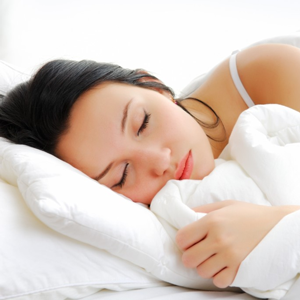My last post on PMDD, PMS and hormonal imbalance is one of the most popular posts in my blog. PMS is very common, in fact, I would say from clinical experience that the majority of females experience significant mood shifts during the week before their menses. PMS mood related symptoms can range from anxiety and depression to irritability. None of which are too pleasant to experience month after month!
And then there is PMDD – aka Premenstrual Dysphoric Disorder. A really long medical term for REALLY bad PMS. PMDD can wreak havoc on the lives of women and their partners. In both PMS AND PMDD, symptoms will improve at the onset of the period.
A new study has been released by Douglas Mental Health University which shows an interesting relationship between melatonin and PMDD. It has long been noted that women with PMDD experience sleep disorders quite commonly: up to 70% experience significant sleep disruption.
Melatonin is a neurohormone produced in the brain by the pineal gland, from the amino acid tryptophan. The synthesis and release of melatonin are stimulated by darkness and suppressed by light, suggesting the involvement of melatonin in the circadian rhythm. Levels of melatonin in the blood are highest just before bedtime. The rise in plasma melatonin is thought to be responsible for bringing on sleep. Melatonin can cross the blood brain barrier freely, as it is both fat and water soluble and as a result, supplementation of this neurohormone can affect brain chemistry directly.
I’m sure you’ve all heard of, or even tried melatonin as a naturopathic supplement for sleep, for which it is known best. It should also be known that melatonin is a potent antioxidant that protects your cells from oxidative stress and damage. Not only does melatonin stimulate the main antioxidant enzyme of the brain, glutathione peroxidase, it is also more effective than glutathione in scavenging toxic hydroxyl radicals, and more efficient than vitamin E in neutralizing DNA damaging peroxyl free radicals.
Melatonin is produced at its highest levels during childhood, and it declines throughout life. In the elderly, melatonin production is often extremely low.
So far, some of the clinically proven uses for melatonin include:
- Jet Lag
- Sleep Disorders
- Sleep Disorders in Children with Developmental Delay
- Anxiety
- Inflammation
- Aging
- Fertility and Egg Quality
- Chronic Fatigue Syndrome
- Depression
- Headache
- Stomach Pain
- High Blood Pressure
- Seasonal Affective Disorder
In this study, Dr. Diane B. Boivin’s team at the Centre for Study and Treatment of Circadian Rhythms at the Douglas Institute investigated how rhythms of melatonin vary across a 24-hour day. Two groups were compared: a group of women with PMDD and a group of women without PMDD. Participants underwent two 24-hour laboratory visits, once during the first half of the menstrual cycle (the follicular phase) and again during the second half of the menstrual cycle (the luteal phase, part of which is the time that women experience PMS symptoms).
The main finding was that compared to healthy controls, women with PMDD had significantly lower melatonin levels during the night-time hours. PMDD women also had a an even further reduction melatonin levels during the time when PMS is normally experienced.
So overall, women with PMDD have lower melatonin levels across the board, but especially so during the phase of the cycle associated with PMS. This strongly suggests that circadian rhythm and melatonin levels should be taken into account as a major contributory factor when treating PMS or PMDD.
References
- Armstrong SM, Redman JR: Melatonin: A chronobiotic with antiaging properties? Med Hypotheses 1991;34:300-309.
- Beck-Friis J, Kjellman BF, Aperia B et al: Serum melatonin in relation to clinical variables in patients with major depressive disorder and a hypothesis of a low melatonin syndrome. Acta Psychiatr Scand 1985;71:319-330.
- Carlo Pieri, Maurizio Marra, Fausto Moroni, Rina Recchioni, Fiorella Marcheselli, Melatonin: A peroxyl radical scavenger more effective than vitamin E, Life Sciences, Volume 55, Issue 15, 1994, Pages PL271-PL276
- Shechter A, Lespérance P, Ng Ying Kin NMK, Boivin DB (2012) Pilot Investigation of the Circadian Plasma Melatonin Rhythm across the Menstrual Cycle in a Small Group of Women with Premenstrual Dysphoric Disorder. PLoS ONE 7(12): e51929. doi:10.1371/journal.pone.0051929





